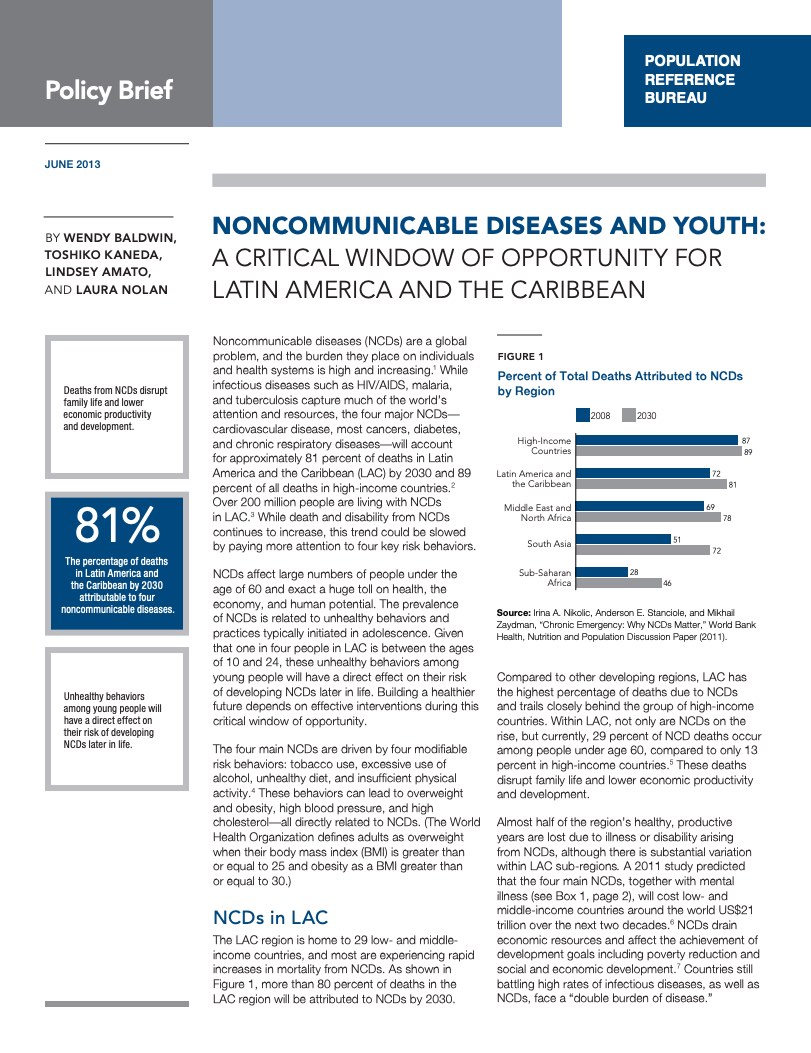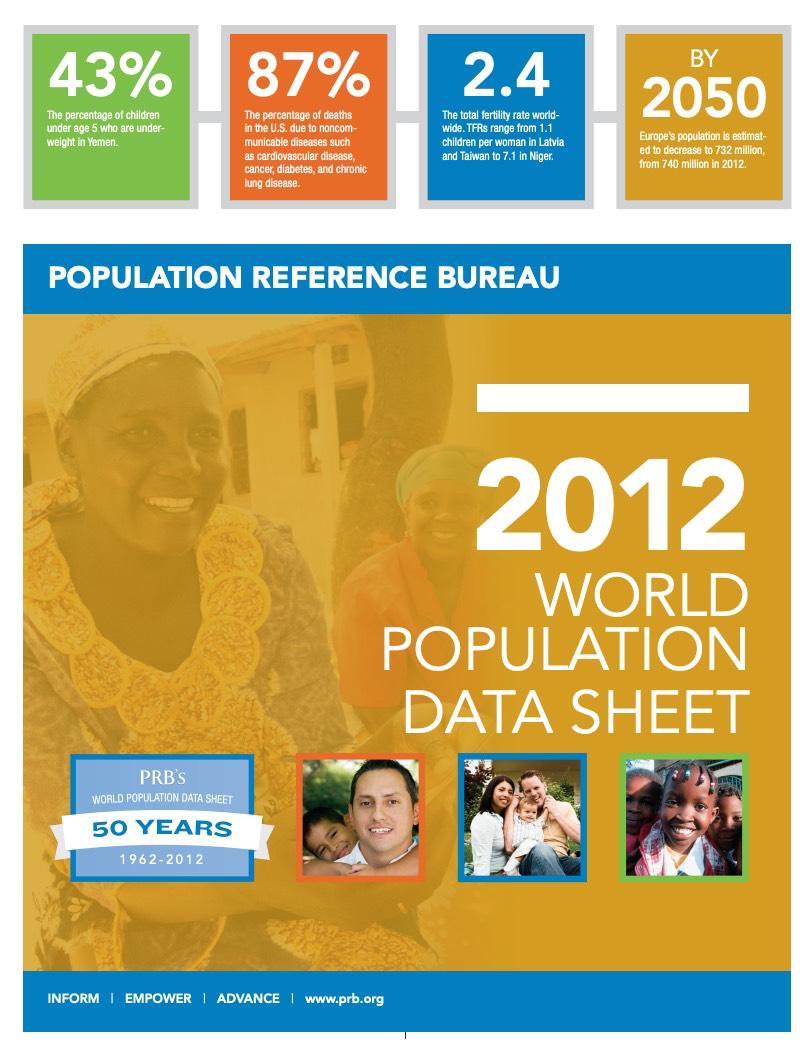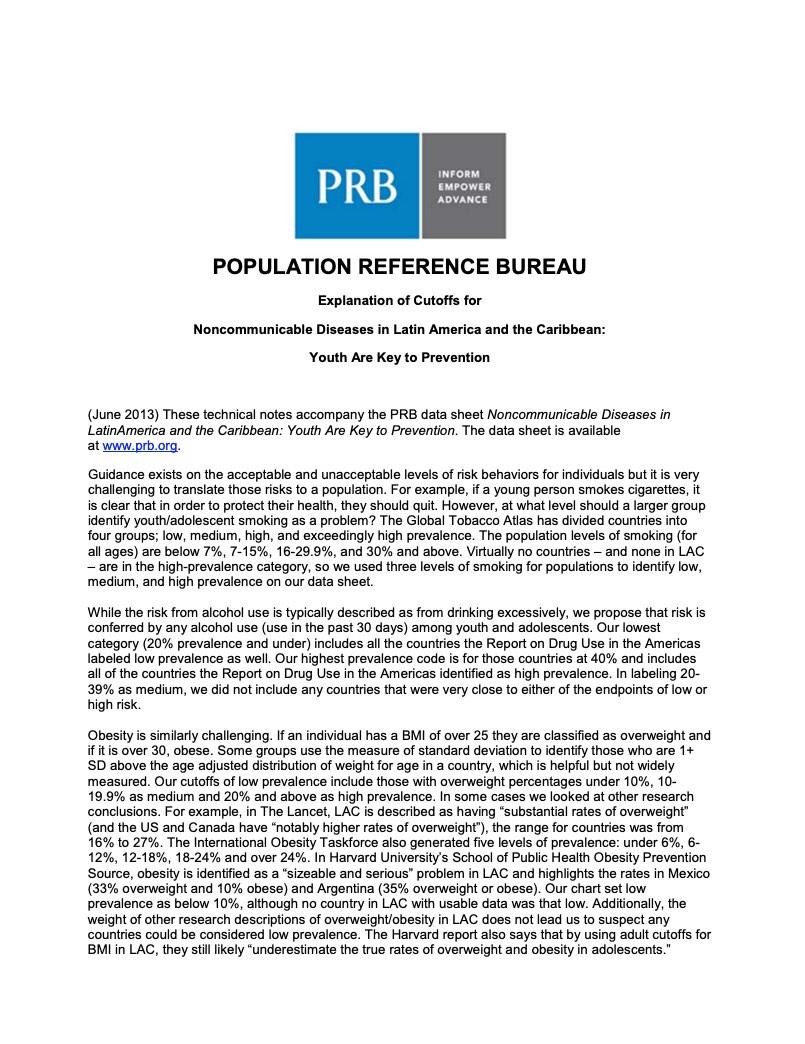930 Search Results Found For : "Low-priced medicines https://simplemedrx.top""
The Growing Owner/Renter Gap in Affordable Housing in the U.S.
(2013) National trends mask a growing owner/renter gap in the amount of money spent on housing, relative to household income.

Project: Combatting Noncommunicable Disease Risk Factors in Youth
Policy Brief. Noncommunicable Diseases and Youth: A Critical Window of Opportunity for Latin America/Caribbean
(2013) Noncommunicable diseases (NCDs) are a global problem, and the burden they place on individuals and health systems is high and increasing.
Population Growth and Deforestation: A Critical and Complex Relationship
(2004) During the last two decades, agricultural expansion, logging, development, and other human activities caused the deforestation of more than 120,000 square kilometers each year.

2012 World Population Data Sheet
Nearly all future population growth will be in the world's less developed countries, and the poorest of these countries will see the greatest percentage increase.

Project: Combatting Noncommunicable Disease Risk Factors in Youth
Data Sheet Explanation of Cut-Offs: Noncommunicable Diseases in Latin America and the Caribbean
(2013) The four major NCDs—cardiovascular disease, most cancers, diabetes, and chronic respiratory diseases—will account for approximately 81 percent of deaths in Latin America and the Caribbean by 2030, and 89 percent of all deaths in high-income countries.
Project: IDEA: Informing Decisionmakers to Act
Family Planning and Gender Equality: Partners in Development
"Family Planning and Gender Equality: Partners in Development," an ENGAGE multimedia presentation by Population Reference Bureau (PRB), makes the case that in order to achieve the Millennium Development Goals of reducing poverty by 2015 both family planning and gender equality must be taken into account.

Project: PACE: Policy, Advocacy, and Communication Enhanced for Population and Reproductive Health
2015 World Population Data Sheet Interactive: Focus on Women’s Empowerment
This year’s data include indicators on the status of women in key areas such as education, employment, and government. Looking at the numbers across the world, we can get a picture of women’s progress towards equality.
What Can the Discipline Do to Solve the Human Predicament?
On Sept. 28, 2007, as part of the Population Reference Bureau's Policy Seminar Series, Dr. Paul Ehrlich discussed ways in which demography can greatly increase its policy impact in areas as diverse as climate change, the conservation of natural capital, and, of course, population reduction.
